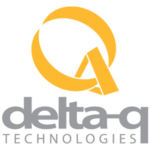As the push for electrification intensifies across various sectors, the influx of information can be overwhelming. For Original Equipment Manufacturers (OEMs), mastering the subtleties of battery technology is crucial to navigating this crowded landscape effectively
In short, the selection of appropriate battery and charging systems boils down to two pivotal factors: specific operational requirements of the fleet, and broader electrification objectives.
During a panel discussion at the Future of Electrification 2024 conference, experts from Delta-Q Technologies, Discover Energy Systems, Flux Power, and Trojan Battery Company delved into these critical technologies. They provided OEMs with the insights needed to make informed decisions about electrifying their fleets. By breaking down the complexities of battery and charging solutions, OEMs can arm themselves with the knowledge to choose options that align best with their needs and goals.
Watch the full panel discussion here:
Innovations in Industrial Electrification
Electrification has advanced steadily over the last decade, characterized more by continuous improvements rather than sudden breakthroughs. For OEMs, this evolution necessitates continual monitoring, as technologies that were once considered novel or impractical gradually become viable.
A prime example of this is wireless charging. Initially viewed as a convenience feature for consumer electronics, it has now scaled into industrial applications such as:
- Streamlined electric vehicle (EV) charging
- Power solutions for Automated Mobile Robots (AMRs) and Automated Guided Vehicles (AGVs)
- Non-contact charging setups ideal for environments like mining, where traditional charging methods can be hampered by dirt and debris.
Another significant advancement lies in Battery Management Systems (BMS). Whereas a few short years ago these systems suffered from relative fragility, modern BMS boast a rugged build well-suited for industrial applications.
It is especially in these applications—where vehicles are exposed to a wide range of harsh environments—that a strong BMS optimizes operations with real-time updates, enhancing charging potential and minimizing potential dangers.
Such systems are also critical for fine-tuning charging capabilities to particular battery chemistries. As the industry has matured, a variety of battery types have become available, each suited to different needs and applications.
Beyond the widely used lithium-ion, alternative chemistries are gaining traction, including:
- Lithium-Iron Phosphate (LFP) – Known for thermal and chemical stability, offering greater safety and longevity.
- Lithium Titanate (LTO) – Durable across a wide range of temperatures, and well suited for rapid charging.
- Sodium-Ion – Boasts cost-efficiency and supply chain resilience superior to lithium chemistries, but with lower energy density.
While these markets are not as mature as lithium-ion, individual OEM priorities may make such chemistries a better strategic choice. Understanding the specific requirements and objectives of electrifying a fleet is essential to determine the most appropriate battery chemistry and supporting infrastructure.
Opportunities and Challenges in Electrified Industrial Equipment
An increasing number of OEMs are electrifying. This is good—but also requires additional long-term considerations, particularly in regions with limited infrastructure or in sectors with high power demand.
This challenge is further compounded by the industry-wide trend towards higher voltages—reaching levels previously unseen in electrified equipment. This current state of the market requires careful evaluation on several fronts:
- Infrastructure needs – While European markets often boast well-developed electrification infrastructures, North American regions typically need a more comprehensive analysis and enhancement of their infrastructure networks to support new electrification demands.
- Component availability – The preference for readily available off-the-shelf components often clashes with the requirements imposed by high-voltage applications, leading to potential shortages or mismatches in component supply.
- Market knowledge – Industries such as construction, which have traditionally depended on internal combustion engines, might lack the necessary expertise to ask pertinent questions critical to transitioning to electrified solutions.
- Communication and standardization – Progress in standardizing communication through technologies like the Controller Area Network (CAN) bus is encouraging, yet still far from established. This system facilitates universal communication among chargers—across different applications and regardless of the manufacturer.
These considerations often involve strategic trade-offs. OEMs must clearly define their electrification goals, aligning battery and charger selections accordingly. Engaging in a dynamic partnership with vendors is also vital—with a dialogue-based approach often achieving greater success over a rigid specification list.
This collaborative strategy is particularly important in managing unique or edge-case scenarios. For instance, achieving continuous 24/7 operations in material handling not only requires batteries with high energy density but also chargers that can sustain intense workloads.
Optimization: How OEMs Maximize the Benefits of Electrification
Amidst the many advances in battery and charging technology, the focus often shifts to integration and compatibility. An electrified fleet often comes with a higher upfront cost, much of which is concentrated in one component: the battery.
It’s for this very reason that forward-thinking OEMs seek to optimize battery performance with a calibrated charging solution, maximizing battery ROI with a longer lifecycle and superior efficiency.
The specifics of this process often depend on individual OEM needs, but some general optimizations include:
- Utilizing the right battery cell – Lead acid electrifies at a basic level, but advanced chemistries like lithium-ion can unlock truly intelligent, two-way communication between battery and charger.
- Integrating BMS – The right Battery Management System enhances safety and charging efficiency, providing real-time updates on temperature and state of charge (SOC) to optimize performance.
- Considering infrastructure – OEMs need to tailor systems to the specific operational environments of their vehicles. This includes determining whether the battery will work with on-board or off-board charging systems (or both) and planning for the availability of energy sources where the vehicles will operate.
While the allure of cutting-edge technologies like solid-state batteries and supercapacitors may be tempting, OEMs must weigh the potential benefits against the cost and practicality of their specific applications. In many cases, the returns on investment in these advanced technologies may not justify their high cost, particularly on a large scale or in the short term.
A Glimpse Into the All-Electric Future
Moving forward, stringent regulatory restrictions are anticipated to further drive the adoption of new processes and technologies.
One area gaining increased focus is battery recycling, spurred by initiatives like the European Battery Passport. This regulatory measure aims to streamline the recycling process and enhance the sustainability of battery production and disposal. Overcoming logistical hurdles, such as the transportation of damaged or end-of-life batteries, will require insights from more mature markets.
Yet, despite these hurdles, proactive OEMs are already capitalizing on the shift to electrification. The sector’s progress, marked by gradual technological improvements, suggests that delaying adoption in anticipation of future advancements may result in missed opportunities.
By understanding the needs of their machinery, partnering with knowledgeable suppliers, and keeping up-to-date with the latest advancements, OEMs can effectively and confidently navigate the electrification of industrial vehicles. In doing so, they position themselves at the forefront of a greener, more sustainable future.





